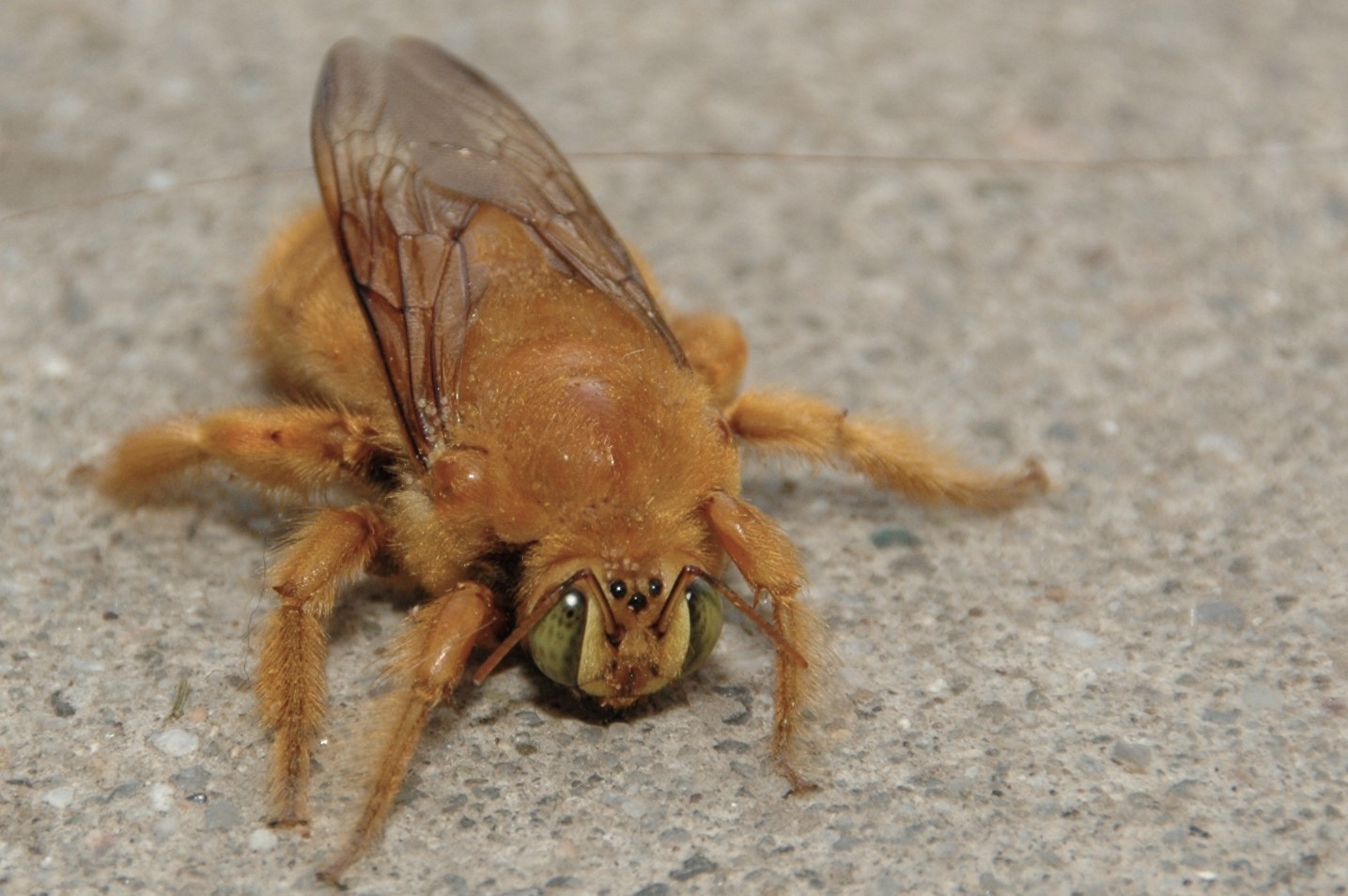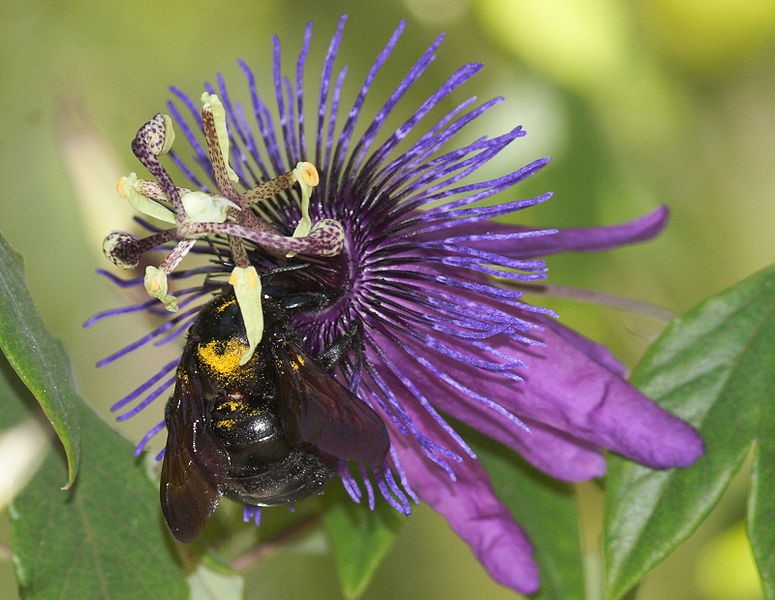Interactions
Things can get heated!
Xylocopa
varipunctua
(Valley Carpenter Bees) are important pollinators in climates
that tend to be warmer than most. They pollinate a wide variety
of food plants making them very useful to, not only humans, but
all animals that eat plants. They have a high tolerance for
temperature making them especially useful in hot or even desert
climates (Keasar 2010).
They don't make very good pets
The valley carpenter bee male has a very aggressive attitude towards
any organism that comes close to its nest. In order to protect its
nest from potential predators the males will put on the persona that
they have stingers and are a threat to them. This is a major bluff
on the part of the bee because the male does not have a stinger. The
only one who does have a stinger is the female and in order to get
one to sting you, you must agitate it or handle it.
Homeostasis at its finest
When it comes to foraging, the valley carpenter bee is mostly active
when the temperature is between 12 and 40°C. This is a good
indicator of an efficient body temperature regulating system in the
valley carpenter bee. They also tend to take in exceedingly high
amounts of water while pollinating. A possible answer is that ions,
rather than water, are limited for the bee so the bee thinks it
needs more water and takes in much more than it needs (Keaser 2010).
X.
varipuncta
is particularly good at pollinating certain plants even more than
honey bees are. For instance they are especially good at pollinating
passionflower in their natural habitats. This is true for tomatoes
as well due to their ability to buzz the antlers. The same goes for
hybrid seed production in cotton (Keaser 2010).

